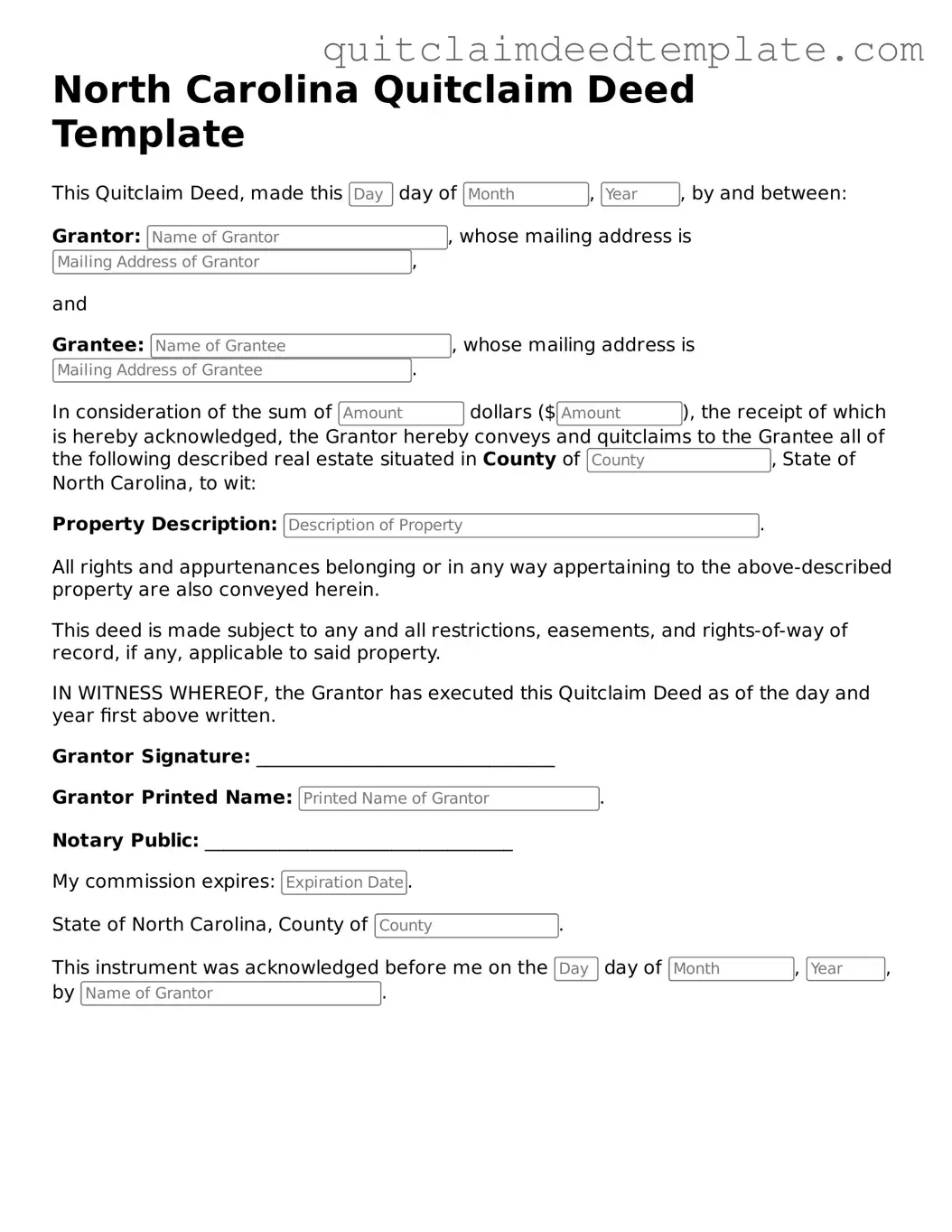Documents used along the form
A Quitclaim Deed is a legal document used to transfer ownership of real property. In North Carolina, several other forms and documents may accompany this deed to ensure a smooth transaction. Below is a list of commonly used forms that may be relevant in the context of property transfers.
- Property Survey: This document provides a detailed map of the property boundaries. It helps clarify the exact dimensions and any encroachments on the property.
- Title Search Report: A title search report outlines the history of ownership and any liens or encumbrances on the property. It ensures that the seller has the right to transfer the property.
- Affidavit of Title: This sworn statement confirms that the seller is the rightful owner of the property and discloses any issues that could affect the title.
- Property Transfer Tax Form: This form is required for reporting the transfer of property and calculating any applicable taxes due to the state.
- Real Estate Purchase Agreement: This contract outlines the terms and conditions of the sale, including the purchase price and any contingencies that must be met.
- Closing Statement: This document summarizes all financial transactions related to the sale, including closing costs, taxes, and any adjustments made during the closing process.
- Notice of Settlement: This notice informs interested parties that the property has been sold and provides relevant details about the transaction.
- Power of Attorney: If the seller cannot be present at the closing, this document allows another person to act on their behalf in the transaction.
These documents play a critical role in the property transfer process. It is essential to ensure that all necessary forms are completed accurately to facilitate a smooth transaction and protect the rights of all parties involved.
